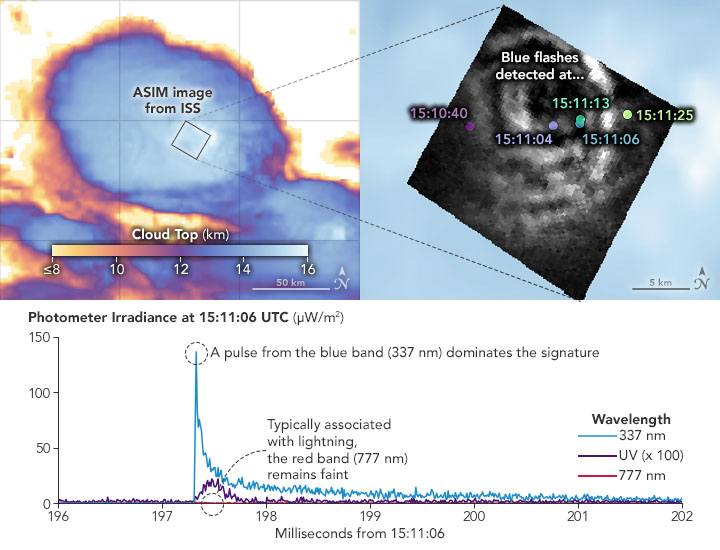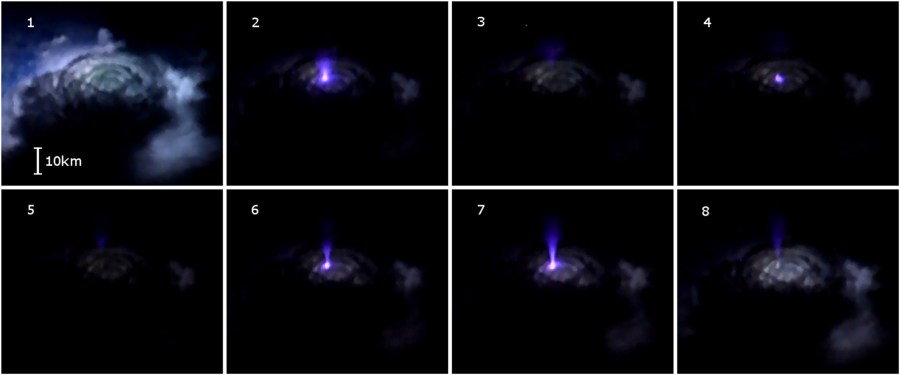TAMPA, Fla. (WFLA) – In a recent interview with WFLA Now’s JB Buinno and Max Defender 8 Meteorologists Amanda Holly and Rebecca Barry, Astronaut Megan McArthur discussed several different meteorological occurrences she and her colleagues have observed from the International Space Station (ISS).
“One of the things that’s fun to do when there’s a night pass – you know we go around the earth every 90 minutes – so we get sunrise and sunset multiple times during our complete day, and so if you have a chance to look out the window at night time and you see thunderstorms, often times over the ocean – they’re huge stretches over the ocean,” she said. “You see [lightning] reflected in the clouds, you can see when the lightning flashes you can see the structure of the clouds lit up from inside.”
She pointed out one phenomena in particular that was the coolest she’d witnessed.
“One time I saw lightning, instead of going down toward Earth, coming away from the clouds out into space which I had never seen anything like that before! I was amazed!” McArthur recalled. “I came flying back down into the main area and said, ‘You guys would never believe what I just saw!’ We talked about it and we think of it – it was a phenomena called a Blue Streak.”
A blue streak has been witnessed by very few humans, since you can only see them from space. According to NASA, cameras and sensors on the ISS have been helping scientists to characterize blue jets, blue flashes and other natural light shows produced at the tops of thunderstorms.
They explain that a blue jet is a type of lightning. But instead of the lightning we are accustomed to on Earth, blue jet lightning shoots upwards from the tops of thunderstorms towards space. A blue jet can reach the stratopause in less than a second, which is about 31 miles above Earth’s surface.
European astronaut Andreas Mogensen was observing intense thunderstorms over the Bay of Bengal from the cupola on the ISS on Sept. 8, 2015 when the ESA says he recorded a video that captured 254 brief blue flashes of light from the top layer of a cloud. One of them rose above the other and into the stratosphere, capturing a blue jet on the video.
“The remarkable video remains one-of-a-kind, but researchers have since started to make more continuous observations with instruments mounted on the outside of the space station,” NASA’s Earth Observatory site says.

A study based on that video shows and explains imagery of blue streaks, saying, “we first present observations of a pulsating blue jet. Figure 3 shows eight consecutive images beginning with the cloud illuminated by lightning deeper inside the cloud.”
“The first pulse reaches a length of ~13.25 km (53 pixels) (2) after which it fades, leaving faint emissions up to ~17.5 km (70 pixels) (3). Then a second pulse appears at the base of the original discharge, with faint emissions reaching even higher to 10.5–20 km (42–80 pixels); these are disconnected from the activity at the root and may be the remains of the first pulse (4),” the study says. “The discharge then fades, with blue emissions remaining at the top (5). The discharge finally rebrightens a third time to 18.5 km (6), reaching its maximum extent of ~21.5 km (86 pixels) (7–8) before fading completely. The altitude and size of events have been calculated after correcting for perspective.”

You can watch the full interview with McArthur and her NASA colleague, Astronaut Shane Kimbrough, on an upcoming episode of Tracking the Tropics.






